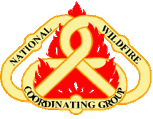| On September 1, 2012 a ten person crew were mopping up in Division E on the Waterfalls 2 Fire located on the Warm Springs Reservation. Standards for mop up on the Water Fall 2 fire were established at 300 feet in all divisions with the exception of M which is inaccessible, and 100% mop up of all spots. Terrain in divisions varies from relatively flat to 60% or greater slope, fuels consist of mixed pine and fir with numerous snags per acre and heavy dead and downed material over large areas.
At 1303 hours, the crew were mopping up and snagging at the 250 to 300 foot distance when a falling swamper was struck on the right shoulder by a top knocked out of a tree. The tree top was about 2 to 2½ feet long and about 1 to 2 inches in diameter and fell from 50 to 70 feet from a tree. The tree that was felled was around 10” DBH and in the 50-70 foot range and as it fell struck another tree knocking out the top which impacted the swamper. The swamper was around three feet away from the faller at the time of the accident, and was wearing all PPE properly. A line medic evaluated the injured firefighter and was determined to have non life threatening injuries and was then transported to the ICP Medical Unit for evaluation and was then sent to the hospital for follow-up.
The concern in this instance is risk and exposure to firefighters in the mop-up phase, often units will set hard standards such as the determined 300 foot mop-up standards in heavy snag areas. Numerous hours of firefighter and faller exposure is associated with hard fast mop-up standards in steep or heavy snag areas and puts them at undue risk and more often than not risk outweighs the benefit. Units need to consider firefighter exposure in the mop up phase, and weigh risk vs. benefits when establishing standards for mop-up. |



